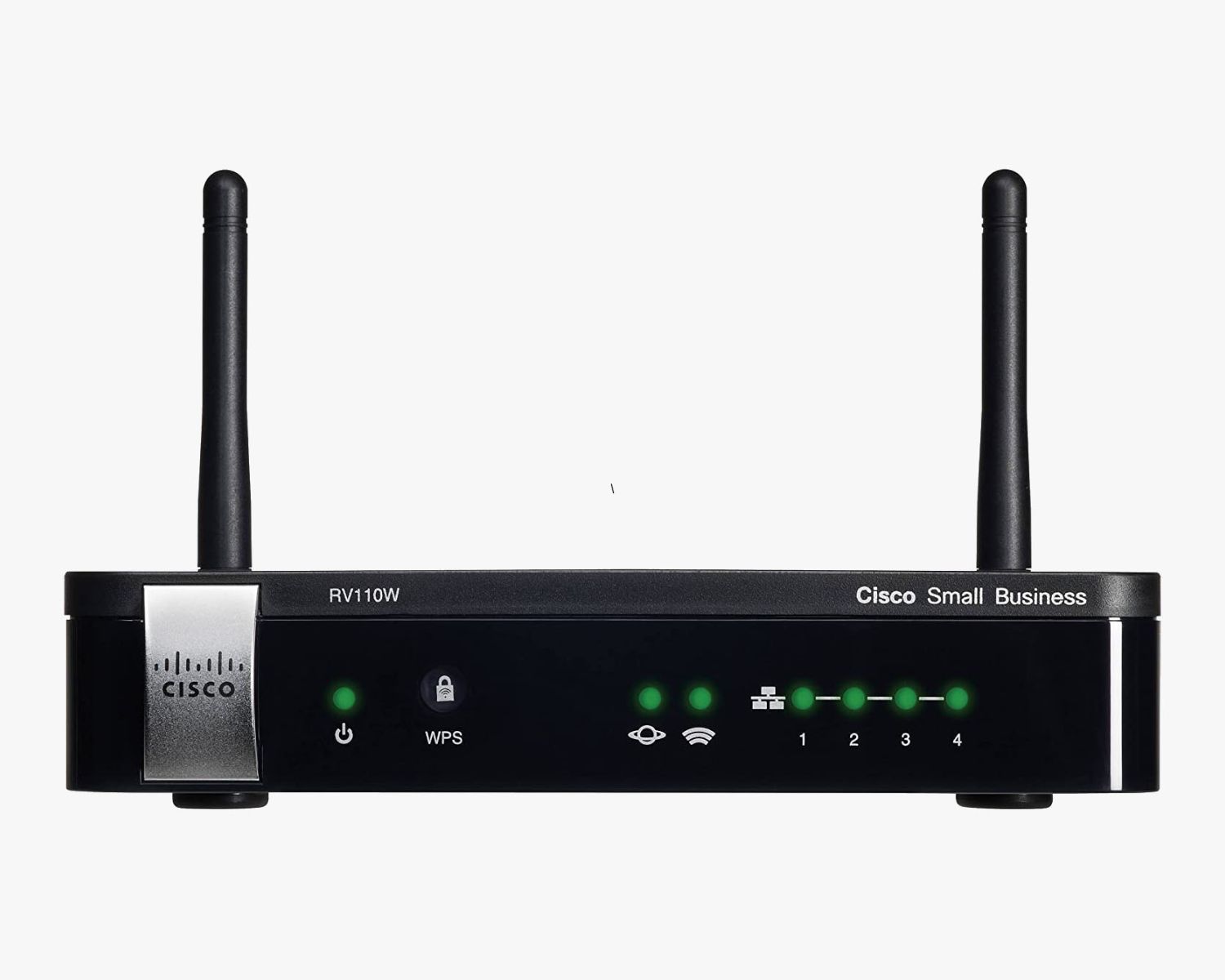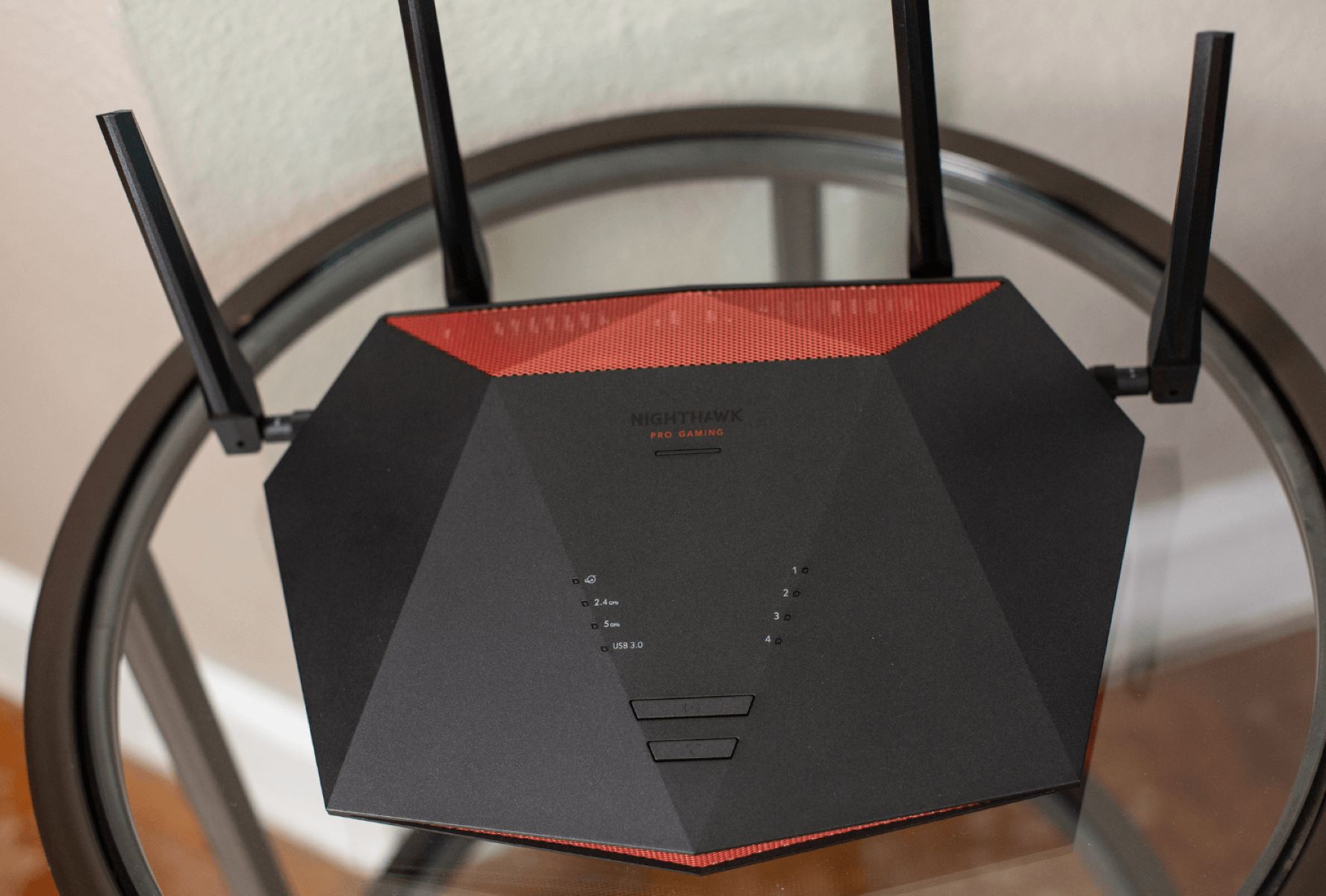Introduction
Welcome to the fascinating world of data networks! In today’s digital age, the ability to transmit and receive information quickly and efficiently is crucial. Whether it’s sending an email, streaming a video, or accessing a website, all of these activities rely on the underlying infrastructure of data networks. At the heart of these networks are routers, the key devices responsible for forwarding traffic between different network segments.
But how do routers know where to send the data packets they receive? How do they determine the optimal path for traffic to reach its destination? The answer lies in the protocols that routers use to communicate and exchange routing information.
In this article, we will explore the fundamental concepts of routing protocols and their role in determining the optimal path for forwarding traffic. We will delve into the different types of routing protocols, such as interior gateway protocols (IGPs) and exterior gateway protocols (EGPs), and discuss their distinct characteristics and use cases.
By understanding how routers make these crucial decisions, you will gain valuable insights into the inner workings of data networks and the importance of selecting the right routing protocol for different scenarios.
So, let’s dive in and unravel the mystery behind how routers determine the best path to forward traffic!
The Importance of Routing in Data Networks
In the vast and interconnected world of data networks, routing plays a pivotal role in ensuring efficient and reliable communication. At its core, routing is the process of directing data packets from one network to another, enabling the seamless transmission of information across a complex maze of interconnected devices.
Imagine the internet as a gigantic web of interconnected roads, with routers serving as traffic controllers. Each data packet that needs to be delivered is like a vehicle trying to reach its destination. Just as traffic controllers determine the optimal route for vehicles, routers determine the most efficient path for data packets to follow.
Without effective routing, data packets would be lost in a sea of network congestion, resulting in slow connections, dropped calls, and disrupted internet services. Routing ensures that data packets take the quickest and most reliable route to their destination, minimizing delays and optimizing network performance.
Routing is particularly essential in large data networks, where hundreds or even thousands of devices are connected. It allows data to flow seamlessly across various network segments, such as local area networks (LANs) and wide area networks (WANs), enabling efficient collaboration and communication between different parts of an organization.
Furthermore, routing enables network scalability by handling the growing volume of data traffic. As businesses and organizations expand, more users and devices are added to the network, increasing the demand for efficient data transfer. Routing protocols help adapt the network infrastructure to accommodate this growth, ensuring that communication remains smooth and uninterrupted.
Another crucial aspect of routing is its role in achieving network resilience and fault tolerance. By having multiple paths available, routers can automatically reroute traffic in the event of network failures or congestion, minimizing the impact of outages and ensuring continuous connectivity. This redundancy ensures that data can still reach its destination, even if one path becomes unavailable.
Overall, routing is the backbone of data networks, serving as the invisible force that guides data packets to their destinations. Without robust routing mechanisms in place, the internet as we know it would not be able to function smoothly and efficiently.
In the following sections, we will explore how routers determine the optimal path for forwarding traffic and the various routing protocols that enable this crucial functionality.
How Routers Determine the Optimal Path for Forwarding Traffic
Routing is a complex task that involves routers making informed decisions about the best path to forward data packets. To accomplish this, routers rely on routing protocols, which are sets of rules and algorithms that dictate how routing information is exchanged and used to determine the optimal path for traffic.
Routers gather information about the network topology and the status of network links through a process known as route discovery. This information is stored in a routing table, which is a database that contains details about available network paths and their associated metrics.
When a router receives a data packet, it examines the destination IP address and consults its routing table to determine the next hop for forwarding the packet. The routing table allows the router to make a logical and informed decision based on the information it has obtained from the routing protocols.
Metrics
Metrics are values or parameters used by routers to assess the desirability of a particular network path. These metrics can include factors such as bandwidth, latency, reliability, and cost. By assigning values to these metrics, routers can compare different paths and choose the most optimal one.
For example, a router may prefer a path with a higher bandwidth to ensure fast data transmission or choose a path with lower latency to minimize delays. The choice of metrics depends on the specific needs and priorities of the network.
Interior Gateway Protocols (IGPs)
Interior Gateway Protocols (IGPs) are used within an autonomous system (AS) or a single network. Examples of IGPs include Routing Information Protocol (RIP), Open Shortest Path First (OSPF), and Enhanced Interior Gateway Routing Protocol (EIGRP).
IGPs exchange routing information among routers within the same network and use metrics to determine the best path. Each router updates its routing table using the information received from neighboring routers. This dynamic exchange of routing information allows routers to adapt to changes in the network, such as link failures or additions, and ensure that data is routed along the most efficient paths.
Exterior Gateway Protocols (EGPs)
Exterior Gateway Protocols (EGPs) are used for routing between different autonomous systems or networks. The most commonly used EGP is the Border Gateway Protocol (BGP). Unlike IGPs, which focus on internal routing, EGPs handle the exchange of routing information between different networks.
BGP routers exchange information about network prefixes and their availability across multiple autonomous systems. BGP determines the best path based on policies defined by network administrators, such as preferring certain paths or avoiding certain providers. This allows networks to make strategic routing decisions based on business requirements and priorities.
By utilizing a combination of IGPs and EGPs, routers can determine the optimal path for forwarding traffic based on various metrics and network considerations. This ensures efficient and reliable data transmission across complex data networks.
In the next sections, we will explore the specific details and characteristics of different routing protocols, such as RIP, OSPF, and EIGRP, to gain a deeper understanding of how routers make routing decisions.
Interior Gateway Protocols (IGPs)
Interior Gateway Protocols (IGPs) are routing protocols that are used within a single autonomous system (AS) or a single network. IGPs are designed to facilitate communication and exchange of routing information among routers within the same network, allowing them to determine the optimal path for forwarding traffic.
Routing Information Protocol (RIP)
The Routing Information Protocol (RIP) is one of the oldest and simplest IGPs. RIP routers exchange their routing tables with neighboring routers, sharing information about reachable networks and the associated metrics, or hop counts. RIP uses the Bellman-Ford algorithm to determine the best path based on the number of hops required to reach the destination.
One of the main advantages of RIP is its simplicity, making it easy to configure and deploy. However, RIP has limitations in terms of scalability and convergence time, as it relies on periodic updates to exchange routing information and can take some time to adjust to network changes.
Open Shortest Path First (OSPF)
Open Shortest Path First (OSPF) is a more advanced and scalable IGP that uses a link state routing algorithm. OSPF routers share information about the network topology by exchanging link state advertisements (LSAs). Each router then builds a complete and synchronized view of the network, allowing for more efficient path selection based on a variety of metrics such as bandwidth, delay, and reliability.
Unlike RIP, OSPF routers only exchange information about changes in the network rather than sharing entire routing tables. This reduces the amount of routing information exchanged and improves convergence time. OSPF also supports the concept of areas, allowing for hierarchical and scalable network designs.
Enhanced Interior Gateway Routing Protocol (EIGRP)
Enhanced Interior Gateway Routing Protocol (EIGRP) is a Cisco proprietary IGP that combines the characteristics of both distance vector and link state protocols. EIGRP routers exchange routing information using distance vector updates, similar to RIP, but also maintain a topology table with information about network reachability like OSPF.
EIGRP uses a composite metric that considers factors such as bandwidth, delay, reliability, and load. By using the Diffusing Update Algorithm (DUAL), EIGRP routers can quickly adapt to network changes and converge on the best paths.
EIGRP supports authentication and load balancing, making it a versatile and robust IGP for medium to large networks. However, its proprietary nature limits its interoperability with non-Cisco devices.
Overall, IGPs are essential for facilitating routing within individual networks or autonomous systems. Routing algorithms such as RIP, OSPF, and EIGRP enable routers to exchange information, select the best paths, and adapt to network changes. The choice of IGP depends on factors such as network size, scalability requirements, and vendor preferences.
In the following sections, we will explore exterior gateway protocols (EGPs), such as the Border Gateway Protocol (BGP), which are used for routing between different autonomous systems.
Exterior Gateway Protocols (EGPs)
Exterior Gateway Protocols (EGPs) are routing protocols that enable communication and exchange of routing information between different autonomous systems (AS) or networks. Unlike Interior Gateway Protocols (IGPs), which focus on internal routing within a single network, EGPs handle the routing between different networks.
Border Gateway Protocol (BGP)
The Border Gateway Protocol (BGP) is the most commonly used EGP in the Internet. BGP is responsible for exchanging routing information and determining the best path for traffic between autonomous systems. It allows networks to make strategic routing decisions based on policies defined by network administrators.
BGP routers exchange information about network prefixes and their availability, known as the BGP updates. These updates contain information about the networks that each router can reach, along with attributes such as the path attributes, origin, and local preference. BGP routers use this information to calculate the best path and make routing decisions.
One of the key features of BGP is its ability to consider multiple path options and evaluate their attributes. By considering factors such as AS path length, next-hop reachability, and policy-based attributes, BGP enables network administrators to control the flow of traffic and implement complex routing policies.
BGP provides scalability and stability by implementing multiple levels of hierarchical routing, including internal BGP (iBGP) within an AS and external BGP (eBGP) between different ASs. This hierarchical design allows for efficient control and distribution of routing information across large and complex networks.
While BGP is powerful and flexible, it requires careful configuration and management due to its complex nature. Maintaining a stable and secure BGP routing infrastructure is crucial to ensure proper connectivity and prevent the potential for routing errors or malicious attacks.
Other exterior gateway protocols, such as the Exterior Gateway Protocol (EGP) and the Intermediate System to Intermediate System (IS-IS) protocol, have been developed, but they are less commonly used compared to BGP in modern networks.
In summary, exterior gateway protocols like BGP play a crucial role in facilitating routing between different autonomous systems. BGP allows networks to implement routing policies, control traffic flow, and ensure efficient communication between different networks.
In the following sections, we will explore specific details and features of BGP and dive deeper into the considerations for choosing the right routing protocol for specific network scenarios.
Distance Vector Routing Protocols
Distance Vector Routing Protocols are a type of routing protocol that determine the optimal path for forwarding traffic based on the distance or number of hops to a destination. These protocols rely on routers exchanging information about their connected networks with neighboring routers to build and maintain routing tables.
Routing Information Protocol (RIP)
The Routing Information Protocol (RIP) is a well-known distance vector routing protocol. RIP routers periodically broadcast their routing tables to neighboring routers, sharing information about the networks they can reach and the number of hops required to reach each network. RIP uses hop count as the metric for calculating the best path.
While RIP is simple to implement and configure, it has limitations in terms of scalability and convergence time. RIP routers perform periodic updates, which can result in slow convergence when network changes occur, and RIP only supports a limited hop count of 15, preventing its use in large networks.
Interior Gateway Routing Protocol (IGRP)
The Interior Gateway Routing Protocol (IGRP) is a Cisco proprietary distance vector routing protocol. IGRP routers exchange information about their networks and the associated metrics, including bandwidth, delay, reliability, and load. IGRP uses a composite metric that takes into account these factors to determine the best path.
IGRP allows for more precise routing decisions compared to RIP, and its compatibility with different network sizes makes it suitable for medium-sized networks. However, being a proprietary protocol, IGRP is limited in interoperability with non-Cisco devices.
Distance vector protocols like RIP and IGRP have simplicity on their side, making them easier to understand and configure. However, they are less efficient in handling larger networks or networks with complex topologies due to their reliance on periodic updates and limited metrics.
As a result, distance vector protocols are commonly used in smaller networks or environments where simplicity and ease of configuration are more important than scalability and fine-grained control.
In the next sections, we will explore another type of routing protocol, known as Link State Routing Protocols, which utilize a different approach to determine the best paths for forwarding traffic.
Link State Routing Protocols
Link State Routing Protocols are a type of routing protocol that determine the optimal path for forwarding traffic based on the knowledge of the complete network topology. Unlike distance vector protocols that rely on exchanging routing tables with neighboring routers, link state protocols require routers to exchange information about the state of their directly connected links.
Open Shortest Path First (OSPF)
Open Shortest Path First (OSPF) is a widely used link state routing protocol. OSPF routers exchange link state advertisements (LSAs) containing information about the state of their links, including bandwidth, delay, and reliability. By sharing this detailed information, OSPF routers can build a complete and synchronized view of the network topology.
Using the information obtained from LSAs, OSPF calculates the shortest path tree, or shortest path first (SPF), to determine the best routes. OSPF considers factors such as path cost and link metrics to make routing decisions. Additionally, OSPF supports the concept of areas, allowing for hierarchical network designs and efficient utilization of resources.
OSPF excels in scalability and adaptability, making it suitable for large networks with complex topologies. It converges quickly and can handle network changes efficiently by flooding only the affected LSAs rather than sharing entire routing tables.
Intermediate System to Intermediate System (IS-IS)
Intermediate System to Intermediate System (IS-IS) is another link state routing protocol commonly used in large-scale networks. IS-IS shares similar principles with OSPF but was originally developed for use in ISO’s Connectionless Network Protocol (CLNP) environment.
IS-IS routers exchange link state information using Link State Protocol Data Units (LSPs), which contain details about the router’s interfaces, neighbors, and network reachability. By analyzing the information within LSPs, IS-IS routers can construct a network topology map and calculate the shortest path to destinations.
IS-IS provides excellent scalability, stability, and fast convergence, making it suitable for large networks with heavy traffic loads. It is widely used in service provider networks and certain enterprise environments.
Link state routing protocols like OSPF and IS-IS offer advantages in terms of scalability, efficiency, and flexibility. By having a complete understanding of the network topology and utilizing advanced algorithms to calculate the shortest paths, link state protocols enable routers to make more informed and optimal routing decisions.
In the next section, we will explore hybrid routing protocols, which combine elements of both distance vector and link state protocols, to leverage the strengths of each approach.
Hybrid Routing Protocols
Hybrid Routing Protocols combine elements of both distance vector and link state routing protocols to provide a balanced approach to determining the optimal path for forwarding traffic. These protocols leverage the best features of each approach to achieve scalability, efficiency, and adaptability in routing decisions.
Enhanced Interior Gateway Routing Protocol (EIGRP)
Enhanced Interior Gateway Routing Protocol (EIGRP) is a prime example of a hybrid routing protocol. EIGRP routers exchange routing information using distance vector updates, similar to traditional distance vector protocols. However, EIGRP also maintains a topology table with link state information, similar to link state protocols.
EIGRP uses a proprietary metric that considers factors such as bandwidth, delay, reliability, and load to calculate the best path. Routers running EIGRP share partial updates rather than their entire routing tables, reducing the amount of overhead traffic and enhancing convergence time.
One of the significant advantages of EIGRP is its ability to adapt quickly to network changes while also providing scalability and load balancing capabilities. EIGRP is widely used in medium to large networks, especially in Cisco environments.
Routing Information Protocol Version 2 (RIPv2)
Routing Information Protocol Version 2 (RIPv2) is an enhanced version of the traditional distance vector protocol, incorporating some characteristics of link state protocols. RIPv2 provides support for classless routing, variable length subnet masks (VLSM), and authentication.
Similar to traditional distance vector protocols, RIPv2 performs periodic updates and exchanges complete routing tables. However, RIPv2 includes additional fields in its updates to support the implementation of VLSM and carry subnet mask information.
RIPv2 offers a balance between simplicity and flexibility, making it useful in small to medium-sized networks where ease of configuration is essential.
Hybrid routing protocols like EIGRP and RIPv2 provide a middle ground between the simplicity of distance vector protocols and the efficiency of link state protocols. By incorporating elements of both approaches, these protocols offer scalability, adaptability, and efficient routing decision-making.
Choosing the right routing protocol depends on various factors, such as the size and complexity of the network, the features required, and the vendor compatibility. Understanding the characteristics and capabilities of different routing protocols can help network administrators make informed decisions to ensure optimal routing performance.
In the next sections, we will explore specific details and considerations for two widely utilized routing protocols: the Border Gateway Protocol (BGP) and the Routing Information Protocol (RIP).
Border Gateway Protocol (BGP)
The Border Gateway Protocol (BGP) is a routing protocol widely used in the Internet for exchanging routing information between autonomous systems (AS). Unlike interior gateway protocols (IGPs), which operate within a single AS, BGP is an exterior gateway protocol (EGP) that enables communication and routing decisions between different networks.
BGP routers exchange information about network prefixes and their availability across multiple ASs. This information is exchanged through BGP updates, which contain attributes such as the path, origin, and local preference. Using this information, BGP routers can calculate the best path and make routing decisions based on administrator-defined policies.
One of the key features of BGP is its ability to support multiple path options. BGP routers can evaluate various paths based on attributes like AS path length, next-hop reachability, and local preferences. This allows network administrators to prioritize certain paths or avoid specific providers.
BGP is designed to achieve scalability and stability in the global internet routing system. It follows a hierarchical design with multiple levels, including internal BGP (iBGP) within an AS and external BGP (eBGP) between different ASs. This hierarchy helps in efficiently controlling and distributing routing information across large and complex networks.
Furthermore, BGP provides the flexibility to implement routing policies at a granular level. Network administrators can define specific policies based on their organization’s requirements, such as preferring certain paths over others, manipulating route attributes, or implementing traffic engineering strategies.
Due to its importance in the Internet’s backbone infrastructure, the security and stability of BGP is a significant concern. Measures such as prefix filtering, route validation, and authentication mechanisms are implemented to help prevent route hijacking and ensure the integrity of routing information.
BGP is a complex protocol that requires advanced configuration and management. Network administrators need to have a deep understanding of BGP’s routing policies, attributes, and techniques to ensure proper connectivity and optimize routing performance.
In summary, the Border Gateway Protocol (BGP) plays a critical role in enabling connectivity and routing decisions in the Internet. Its ability to handle multiple path options, support complex routing policies, and ensure scalability and stability makes it essential for the functioning of global networks.
In the next section, we will explore the Routing Information Protocol (RIP), a simpler and older routing protocol commonly used in smaller networks.
Routing Information Protocol (RIP)
The Routing Information Protocol (RIP) is one of the oldest and most basic distance vector routing protocols still in use today. It is primarily utilized in smaller networks where simplicity and ease of configuration are more important than scalability and advanced routing capabilities.
RIP routers exchange their routing tables with neighboring routers, sharing information about the networks they can reach and the number of hops required to reach each network. RIP uses hop count as the metric for calculating the best path, assuming that the shortest path is the one with the fewest hops.
One of the advantages of RIP is its simplicity. It is straightforward to configure and deploy, making it an accessible choice for network administrators. Additionally, RIP is compatible with different network sizes, from small networks to medium-sized networks.
However, RIP has its limitations. It is not suitable for large or complex networks due to its limited hop count of 15, which restricts its ability to handle expansive internetworks. RIP also has slower convergence time compared to more advanced routing protocols, as it relies on periodic updates to exchange routing information.
Despite its limitations, RIP can still be valuable in certain scenarios. It is a useful tool for learning the basics of routing protocols and can provide simple and reliable routing in small networks with minimal traffic demands.
In recent years, RIP has been largely superseded by more sophisticated routing protocols such as Open Shortest Path First (OSPF) and Enhanced Interior Gateway Routing Protocol (EIGRP). These protocols offer better scalability, faster convergence times, and support for more advanced routing features.
Nevertheless, RIP still retains a presence in legacy networks or in situations where a simple and low-overhead routing solution is required.
In summary, the Routing Information Protocol (RIP) is a basic distance vector routing protocol that offers simplicity and ease of configuration. While it may not be suitable for larger or more complex networks, it can still serve a purpose in smaller environments where simplicity is prioritized over advanced routing capabilities.
In the next sections, we will explore the considerations for choosing the right routing protocol and conclude our discussion on the importance of selecting an optimal routing solution for different network scenarios.
Open Shortest Path First (OSPF)
Open Shortest Path First (OSPF) is a widely used link state routing protocol that operates within a single autonomous system (AS). It is known for its scalability, fast convergence, and support for large and complex networks.
In OSPF, routers exchange link state advertisements (LSAs) containing information about their directly connected links and their associated metrics, such as bandwidth, delay, and reliability. By sharing this detailed information, routers can build a complete map of the network topology.
Using the information obtained from LSAs, OSPF constructs a shortest path tree, also referred to as the shortest path first (SPF) algorithm, to determine the best routes. OSPF calculates the shortest path based on a variety of metrics and factors, including path cost, link reliability, and administrative preferences.
OSPF is designed with scalability in mind. It utilizes hierarchical designs with multiple areas to reduce the complexity of routing tables and minimize the impact of network changes. This allows OSPF to handle massive networks, including enterprise networks, service provider networks, and the Internet backbone.
Another advantage of OSPF is its fast convergence time. When a network change occurs, OSPF routers quickly update their routing tables by exchanging only the affected LSAs. This helps minimize the disruption to network traffic and ensures efficient routing without prolonged downtime.
The support for multiple routing metrics and the ability to implement complex routing policies make OSPF highly flexible. Network administrators can define specific area boundaries, apply fine-grained control over routing decisions, and prioritize certain paths based on bandwidth, delay, or administrative preferences.
OSPF also supports route summarization, allowing routers to advertise summarized routes to reduce the size of routing tables and optimize routing performance. Additionally, OSPF supports authentication mechanisms to ensure the integrity and security of routing information.
Overall, OSPF is a robust and feature-rich routing protocol suitable for large and complex networks. Its scalability, fast convergence, and support for advanced routing features make it a popular choice for organizations seeking efficient and adaptive routing solutions.
In the next section, we will explore the Enhanced Interior Gateway Routing Protocol (EIGRP), a Cisco proprietary hybrid routing protocol.
Enhanced Interior Gateway Routing Protocol (EIGRP)
Enhanced Interior Gateway Routing Protocol (EIGRP) is a hybrid routing protocol developed by Cisco Systems. It combines elements of both distance vector and link-state routing protocols, providing a balance between scalability, efficiency, and adaptability.
EIGRP routers exchange routing information using distance vector updates similar to traditional distance vector protocols. However, unlike pure distance vector protocols, EIGRP also maintains a topology table with detailed link-state information, similar to link-state protocols like OSPF.
EIGRP utilizes a composite metric that considers factors such as bandwidth, delay, reliability, and load to calculate the best path. This enables EIGRP routers to evaluate various path options and make informed routing decisions based on a combination of link characteristics.
One of the advantages of EIGRP is its ability to adapt quickly to network changes. When a network change occurs, only the affected routers send updates to their neighbors, ensuring efficient convergence and minimal impact on network performance. EIGRP also supports load balancing by distributing traffic across multiple paths, thereby utilizing available network resources efficiently.
EIGRP provides scalability and stability in larger networks by dividing the network into multiple routing domains known as autonomous systems (AS). AS boundary routers, also known as border routers, connect different ASes, exchanging routing information and ensuring interconnectivity between them.
Another significant advantage of EIGRP is its feasibility in Cisco environments. Being a Cisco proprietary protocol, EIGRP exhibits excellent compatibility and integration with Cisco devices, making it a popular choice in Cisco-centric networks.
EIGRP supports features such as route summarization, which helps reduce the size of routing tables and optimize network performance. It also offers high security by supporting authentication mechanisms, preventing unauthorized access to routing information.
While EIGRP is a powerful routing protocol with numerous benefits, it is limited in terms of interoperability with devices from other vendors, as it is not an open standard protocol. Therefore, network administrators should consider the compatibility requirements and future expansion plans before deploying EIGRP.
In summary, Enhanced Interior Gateway Routing Protocol (EIGRP) is a hybrid routing protocol that combines the best features of distance vector and link-state protocols. Its ability to adapt quickly, scalability, and compatibility with Cisco devices make it a popular choice in medium to large networks, particularly in Cisco environments.
In the next section, we will explore the considerations for choosing the right routing protocol based on specific network requirements and characteristics.
Considerations for Choosing the Right Routing Protocol
When it comes to choosing the right routing protocol for a network, several important considerations need to be taken into account. The selection of a routing protocol should align with the network’s size, complexity, scalability requirements, available resources, and specific business needs. Here are some essential factors to consider:
Network Size and Complexity:
For small networks with a simple topology, a distance vector protocol like Routing Information Protocol (RIP) may suffice due to its simplicity. In contrast, larger and more complex networks require protocols with better scalability and advanced features like Open Shortest Path First (OSPF) or Enhanced Interior Gateway Routing Protocol (EIGRP).
Scalability:
Consider the projected growth of the network and its ability to handle increasing traffic loads. Link state protocols such as OSPF and IS-IS are designed to scale and handle large networks with complex topologies. On the other hand, distance vector protocols like RIP may have limitations in terms of scalability.
Convergence Time:
The convergence time is the duration it takes for routers to update their routing tables after a network change occurs. Link state protocols generally offer faster convergence times compared to distance vector protocols. Faster convergence ensures minimal disruption to network traffic and better network performance.
Routing Policy and Control:
Consider the need for granular control over routing decisions and the ability to implement specific routing policies. Exterior gateway protocols like Border Gateway Protocol (BGP) provide extensive features for managing and controlling routing policies, making them suitable for organizations requiring complex routing policies and traffic engineering capabilities.
Vendor Compatibility:
Evaluate the compatibility with network devices and consider any specific vendor dependencies. Proprietary protocols like EIGRP are well-suited for Cisco environments, whereas open standard protocols like OSPF offer greater interoperability with devices from multiple vendors.
Security:
Examine the security features offered by the routing protocol, such as authentication mechanisms and support for secure communication. Strong security measures are crucial to protect routing information from unauthorized access and potential attacks.
It is important to carefully evaluate these considerations and match them with the specific needs and requirements of the network. Consulting with networking experts and considering future growth and expansion plans can help in making an informed decision.
In the following sections, we will conclude our discussion on routing protocols and their significance in network communications.
Conclusion
Routing protocols play a vital role in data networks by determining the optimal path for forwarding traffic, ensuring efficient and reliable communication. From distance vector protocols like RIP to link state protocols like OSPF, and hybrid protocols like EIGRP, each routing protocol offers unique features and benefits for different network scenarios.
Interior Gateway Protocols (IGPs) such as RIP, OSPF, and EIGRP are designed for routing within a single network and excel in various aspects. RIP’s simplicity makes it suitable for smaller networks, while OSPF provides scalability and fast convergence for larger and more complex networks. EIGRP, a Cisco proprietary protocol, offers a hybrid approach with adaptability and compatibility.
Exterior Gateway Protocols (EGPs) like BGP handle routing between different autonomous systems and give network administrators control over routing policies and external communications. BGP’s support for multiple path options and policies make it essential for efficient routing in global networks.
Choosing the right routing protocol requires careful consideration of factors such as network size, complexity, scalability requirements, convergence time, routing control, vendor compatibility, and security features. Evaluating these factors helps ensure the optimal selection of a routing protocol that meets specific network needs.
In conclusion, understanding routing protocols and their characteristics allows network administrators to make informed decisions to create efficient, scalable, and secure networks. By choosing the right protocol and implementing it effectively, organizations can enhance network performance, improve communication, and meet their business requirements in the ever-evolving world of data networks.

























